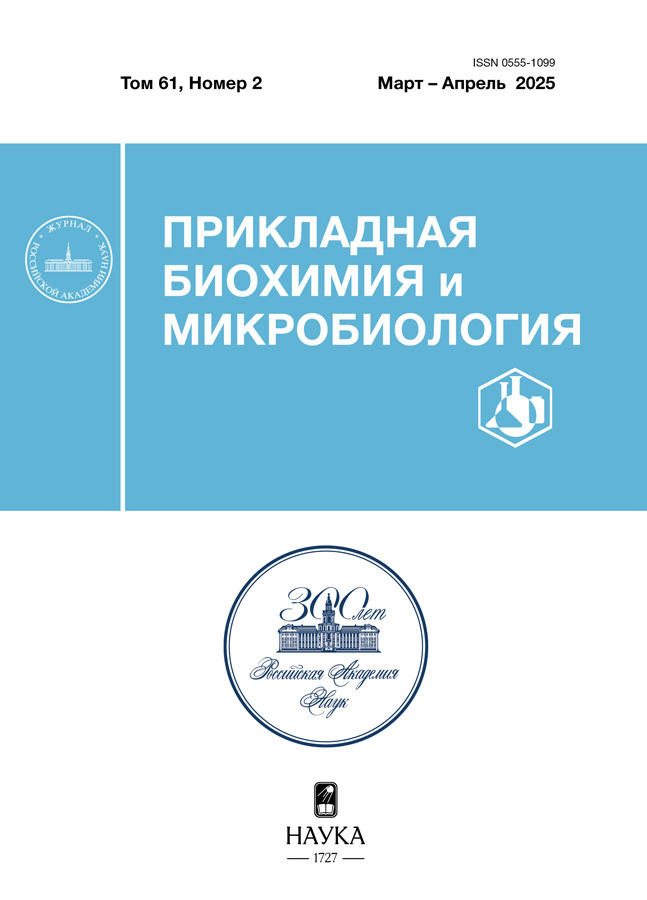Effect of fermentation by Lactobacilli on the organoleptic properties of pea protein isolate
- Авторлар: Kravchenko I.V.1, Furalyov V.A.1, Pshennikova E.S.1, Fedorov A.N.1, Popov V.O.1
-
Мекемелер:
- Federal Research Centre “Fundamentals of Biotechnology” of the Russian Academy of Sciences
- Шығарылым: Том 61, № 2 (2025)
- Беттер: 149-155
- Бөлім: Articles
- URL: https://hum-ecol.ru/0555-1099/article/view/687491
- DOI: https://doi.org/10.31857/S0555109925020042
- EDN: https://elibrary.ru/ENVPJY
- ID: 687491
Дәйексөз келтіру
Аннотация
The work investigated the effect of fermentation with three bacterial preparations (BK-Uglich-K, BK-Uglich- AV and BK-Uglich-P) on the smell and taste of pea protein isolate, as well as on the content of 1-hexanal, phytates and phenolic compounds in the isolate. It was shown that fermentation improves the odor characteristics of the isolate. It was possible to significantly reduce the severity of the bean smell and grassy smell, as well as reduce the content of 1-hexanal. At the same time, fermentation also improved the taste of the isolate: it was possible to significantly reduce the severity of such interfering flavors as bean, tart, bitter and grassy; at the same time, the content of phytates and phenolic compounds in the isolate decreased. The obtained results made it possible to select a bacterial preparation (BK-Uglich-AV) to improve the organoleptic parameters of pea protein isolates intended for the production of analogues of meat and dairy products.
Негізгі сөздер
Толық мәтін
Авторлар туралы
I. Kravchenko
Federal Research Centre “Fundamentals of Biotechnology” of the Russian Academy of Sciences
Хат алмасуға жауапты Автор.
Email: ink71@yandex.ru
Bach Institute of Biochemistry
Ресей, Moscow, 119071V. Furalyov
Federal Research Centre “Fundamentals of Biotechnology” of the Russian Academy of Sciences
Email: ink71@yandex.ru
Bach Institute of Biochemistry
Ресей, Moscow, 119071E. Pshennikova
Federal Research Centre “Fundamentals of Biotechnology” of the Russian Academy of Sciences
Email: ink71@yandex.ru
Bach Institute of Biochemistry
Ресей, Moscow, 119071A. Fedorov
Federal Research Centre “Fundamentals of Biotechnology” of the Russian Academy of Sciences
Email: ink71@yandex.ru
Bach Institute of Biochemistry
Ресей, Moscow, 119071V. Popov
Federal Research Centre “Fundamentals of Biotechnology” of the Russian Academy of Sciences
Email: ink71@yandex.ru
Bach Institute of Biochemistry
Ресей, Moscow, 119071Әдебиет тізімі
- Asen N.D., Aluko R.E., Martynenko A., Utioh A., Bhowmik P. // Foods. 2023. V. 12. № 21. 3978. https://doi.org/10.3390/foods12213978
- Pei M., Zhao Z., Chen S., Reshetnik E.I., Gribanova S.L., Li C. et al. // Food Sience. 2022. V. 46. 101590. https://doi.org/10.1016/j.fbio.2022.101590
- Li C., Chen X., Jin Z., Gu Z., Rao J., Chen B. // Food Funct. 2021. V. 12. № 15. P. 6950–6963. https://doi.org/10.1039/d1fo00608h
- García Arteaga V, Leffler S, Muranyi I, Eisner P, Schweiggert-Weisz U.// Curr. Res. Food Sci. 2020. V. 4. P.1–10. https://doi.org/10.1016/j.crfs.2020.12.001
- Ben-Harb S., Saint-Eve A., Panouillé M., Souchon I., Bonnarme P., Dugat-Bony E. et al. // Int. J. Food Microbiol. 2019. V. 293. P. 124–136. https://doi.org/10.1016/j.ijfoodmicro.2019.01.012
- Shi Y., Singh A., Kitts D.D., Pratap-Singh A. // LWT. 2021. V. 150. 111927. https://doi.org/10.1016/j.lwt.2021.111927
- Masiá C., Fernández-Varela R., Jensen P.E., Yazdi S.R. //Future Foods. 2023. V. 8. 100250. https://doi.org/10.1016/j.fufo.2023.100250
- Vazquez-Munoz R., Dongari-Bagtzoglou A. // Front Oral Health. 2021. V. 2. Р. 689382. https://doi.org/10.3389/froh.2021.689382
- Illikoud N, do Carmo FLR, Daniel N, Jan G, Gagnaire V. // Food Res Int. 2023. V. 166. 112557. https://doi.org/10.1016/j.foodres.2023.112557
- Higgins T. J., Chandler P. M., Randall P. J., Spencer D., Beach L. R., Blagrove R. J. et al. // J. Biol. Chem. 1986. V. 261. P. 11124–11130. https://doi.org/10.1016/S0021-9258(18)67357-0
- Gao Y., Shang C., Saghai Maroof M. A., Biyashev R. M., Grabau E. A., Kwanyuen P. et al. // Crop Science. 2007. V. 47. P. 1797–1803. https://doi.org/10.2135/cropsci2007.03.0122
- Malka M., Du Laing G., Kurešová G., Hegedüsová A., Bohn T. // Front Nutr. 2023. V. 10. 1083253. https://doi.org/10.3389/fnut.2023.1083253
- Mannoubi IEl. // J. Umm Al-Qura Univ. Appll. Sci. 2023. V. 9. P 176–184. https://doi.org/10.1007/s43994-023-00031-y
- García Arteaga V., Demand V., Kern K., Strube A., Szardenings M., Muranyi I. et al. // Foods. 2022. V. 11. № 1. Р. 118. https://doi.org/10.3390/foods11010118
- Onyeoziri I.O., Kinnear M., de Kock H.L. // J. Sci. Food Agric. 2018. V. 98. № 6. P. 2231–2242. https://doi.org/10.1002/jsfa.8710
- Rubio L.A., Pérez A., Ruiz R., Guzmán M.Á., Aranda-Olmedo I. // J. Sci. Food Agric. 2014. V. 94. № 2. P. 280–287. https://doi.org/10.1002/jsfa.6250
- Murat C., Bard M.-H., Dhalleine C., Cayot N. // Food Res. Int. 2013. V. 53. P. 31–41. https://doi.org/10.1016/j.foodres.2013.03.049
- Castro-Alba V., Lazarte C.E., Perez-Rea D., Sandberg A.S., Carlsson N.G., Almgren A. et al. // Food Sci. Nutr. 2019. V. 7. № 12. P. 3902–3911. https://doi.org/10.1002/fsn3.1247
- Cosson A., Meudec E., Ginies C., Danel A., Lieben P., Descamps N. et al. // Food Chem. 2022. V. 385. Р. 132615. https://doi.org/10.1016/j.foodchem.2022.132615
- Roland W.S.U., Pouvreau L., Curran J., van de Velde F., de Kok P.M.T. // Cereal Chem. 2017. V. 94. № 1. P. 58–65. https://doi.org/10.1094/CCHEM-06-16-0161-FI
- Emkani M., Gourrat K., Oliete B., Saurel R. // J. Food Sci. 2024. V. 89. № 7. P. 4229–4249. https://doi.org/10.1111/1750-3841.17145
- Kravchenko I.V., Furalyov V.A., Pshennikova E.S., Fedorov A.N., Popov V.O. // Appl. Biochem. Microbiol. 2024. V. 60. № 6. in press. https://doi.org/10.1134/S0003683824605493
- Kravchenko I.V., Furalyov V.A., Pshennikova E.S., Kostyleva E.V., Sereda A.S., Kurbatova E.I. et al. // Appl. Biochem Microbiol. 2024. V. 60. № 4. P. 656–662. https://doi.org/10.1134/S0003683824604335
Қосымша файлдар










